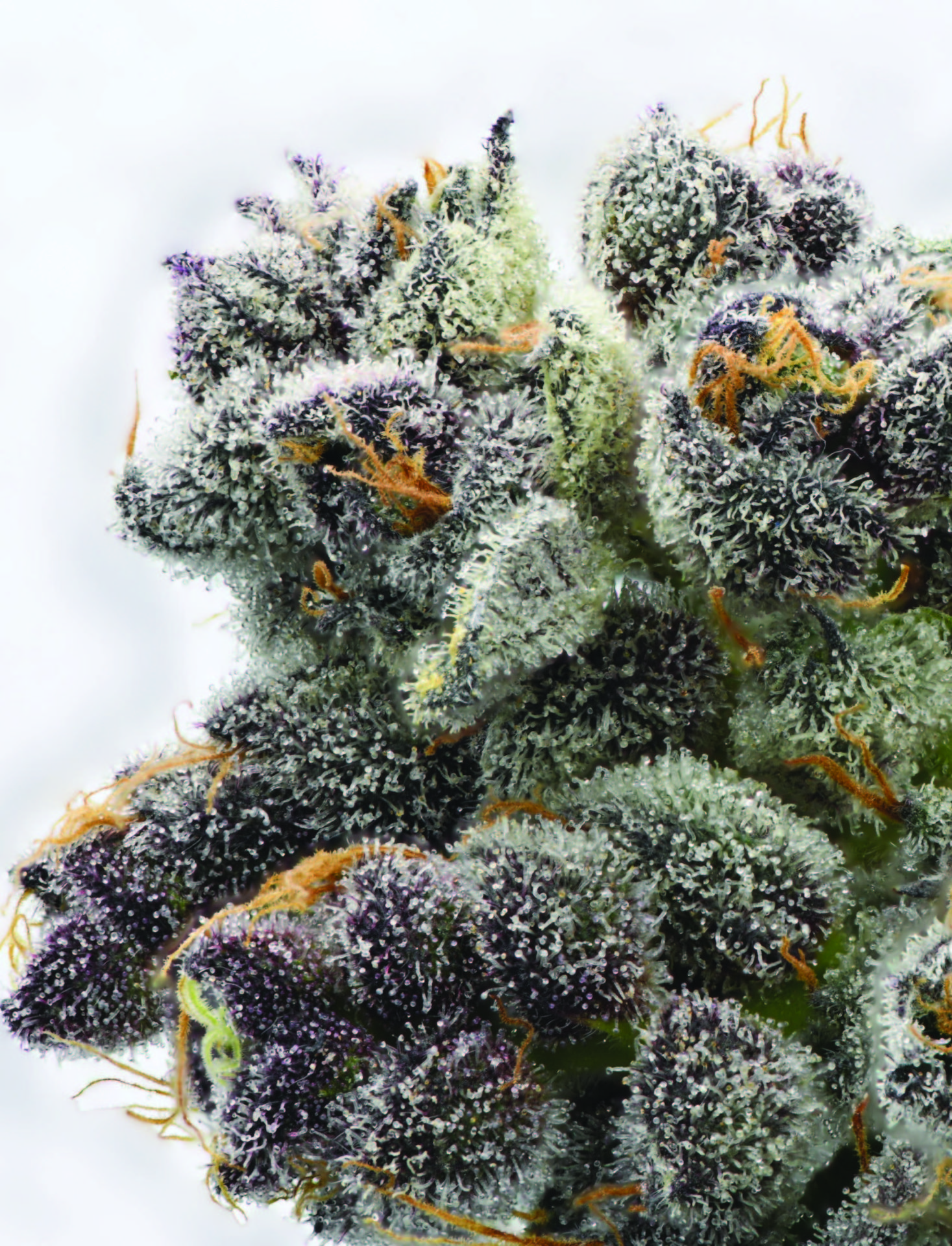
By Hillary Carroll, M.S. CAM, Southwest Complementary Health & Erik B. Burr, Nature’s Force Organics
As we learned in the last article, 103: The Importance of pH Levels to Cannabis Plants, plant growth is dependent on many factors. Let’s get grounded in some more basics.
Soil is the life force for any living plant; it is the stomach, heart, and brains of the plant. A nutrient depleted or toxic soil is going to create a sick and diseased plant. Remember that diseases of plants are actually diseases of soil. Much like trying to treat a human illness, the causative factor must be determined before a suitable treatment can be prescribed. With plants, the first place to look for suspicious elements is at the soil level.
The Soil Food Web is a community of organisms living all or part of their lives in the soil, a complex living system interacting with the environment, plants, insects and animals. The roots of the plant communicate with the Soil Food Web by sending messages to special fungi down to helper microbes recruiting what nutrients, minerals, or water is needed. Within a healthy soil, the helper microbes receive the messages and the roots are provided with the substance that is in demand. These food and water packages are then sent up through the xylem and phloem, which are basically the veins and arteries of the plant. In an unhealthy or nutrient depleted soil the plant does not receive the needed “food” and water, progressing into a state of poor health, which can ultimately end with disease and death. Here is the good news, a healthy soil can promote disease resistance, increase plant vitality, save you money, and produces a better, more potent yield. Two important components that are necessary for soil health are Microbes/ Mycorrhizae and Humic Substances.
Microbes and Mycorrhizae Almost all plants form a symbiotic relationship with microbes in the soil. Some have stronger relationships with bacteria while others prefer fungi. One of the most important of these fungi is Mycorrhizae fungi, which requires the assistance of other beneficial bacteria and fungi within the Soil Food Web to achieve maximum benefits. Mycorrhizae (my-cor-rhi-zee) literally means “fungus-root” and it extends the far beyond the reach of plant roots to obtain water and nutrients that might not be available otherwise. In return, the plant captures carbon and produces complex sugars from the process of photosynthesis that the fungi and additional beneficial microbes feed upon and colonize. The two categories of Mycorrhizae fungi; endomycorrhizae (internal) and ectomycorrhizae (external) have an association with about 90% of all the plants on Earth. When a plant has achieved high colonization of these fungi, one sees improved nutrient and water uptake, disease resistance, drought resistance, improved soil structure, improved root health, increased root density, increased harvest yields, and increased nutrient density of those yields. These benefits can ease any grower’s maintenance practices.
Humic Substances Humic substances are major components of Humus, the end result of a biological and chemical process of decaying plant and animal matter. They are a collection of organic acids called Humic Acids made up of three main components: Humic acid, Fulvic acid, Ulmic acid. Humic Acids are phenomenal brown to black products of soil chemistry that are essential for healthy and productive soils. Most growers aren’t aware that they are among the most important components of soil productivity and fertility. For this article we will focus on two components: Humic and Fulvic acid.
Humic acid is a principal component of Humic substances. It is not a single acid; rather, it is a complex mixture of many different acids. Humic acid is known to influence the growth and proliferation of microorganisms, but requires additional elements to achieve this microbial colonization. It can help break up compacted soils allowing for enhanced water penetration, aiding better root zone growth and development. It also adds essential organic material necessary for nutrient and water retention. Plant growth is improved by the ability of the plant to gather and uptake more nutrients. Humic acid is especially beneficial in freeing up nutrients in the soil, making them available to the plant. For instance, if an aluminum molecule is bound with a phosphorus molecule, Humic acid assists in detaching them making the phosphorus available for the plant. Humic acid acts as a nutrient, water, and oxygen shuttle, assisting in the overall vitality of a plant’s health. Fulvic acid is a part of Humic acids, an organic natural electrolyte that can balance and energize cells. It is also a natural free radical scavenger and natural antioxidant. That’s right. Plants benefit from antioxidants, just like humans! A free radical is a molecule that has extra electrons and becomes very reactive causing damage to surrounding molecules. Fulvic acid is capable of stabilizing these free radicals. It is active in dissolving minerals and metals in a water-based solution, which is nature’s way of chelating metallic minerals making them available for plant uptake. It also has the ability to change, alter, or combine with all other organic or inorganic matter. Fulvic acid can often mobilize and transport many times its weight in dissolved mineral elements. It stimulates the metabolism of a plant to improve growth, reduces oxygen deficiency and enhances the immune system. Fulvic acid stimulates and balances cells, increasing growth and replication conditions, which are vitally important to the nutrition of cells. Plants readily absorb high amounts of fulvic acid maintaining it in their cell and body structures. Microbes, mycorrhizae and humic substances are the key constituents contributing to healthy soil. The average person does not give much thought to what lives in soil and how it might affect the world around them. However, if you are interested in growing plants (whether for food, medicine, or decoration) it is vital that soil health is your top priority. Without a healthy soil, a truly healthy plant cannot exist. In our own bodies; we all need clean water, nutritious food, aided by the proper digestive bacteria and enzymes to be our healthiest selves. The same holds true for healthy soil. Ready to get dirty?

















